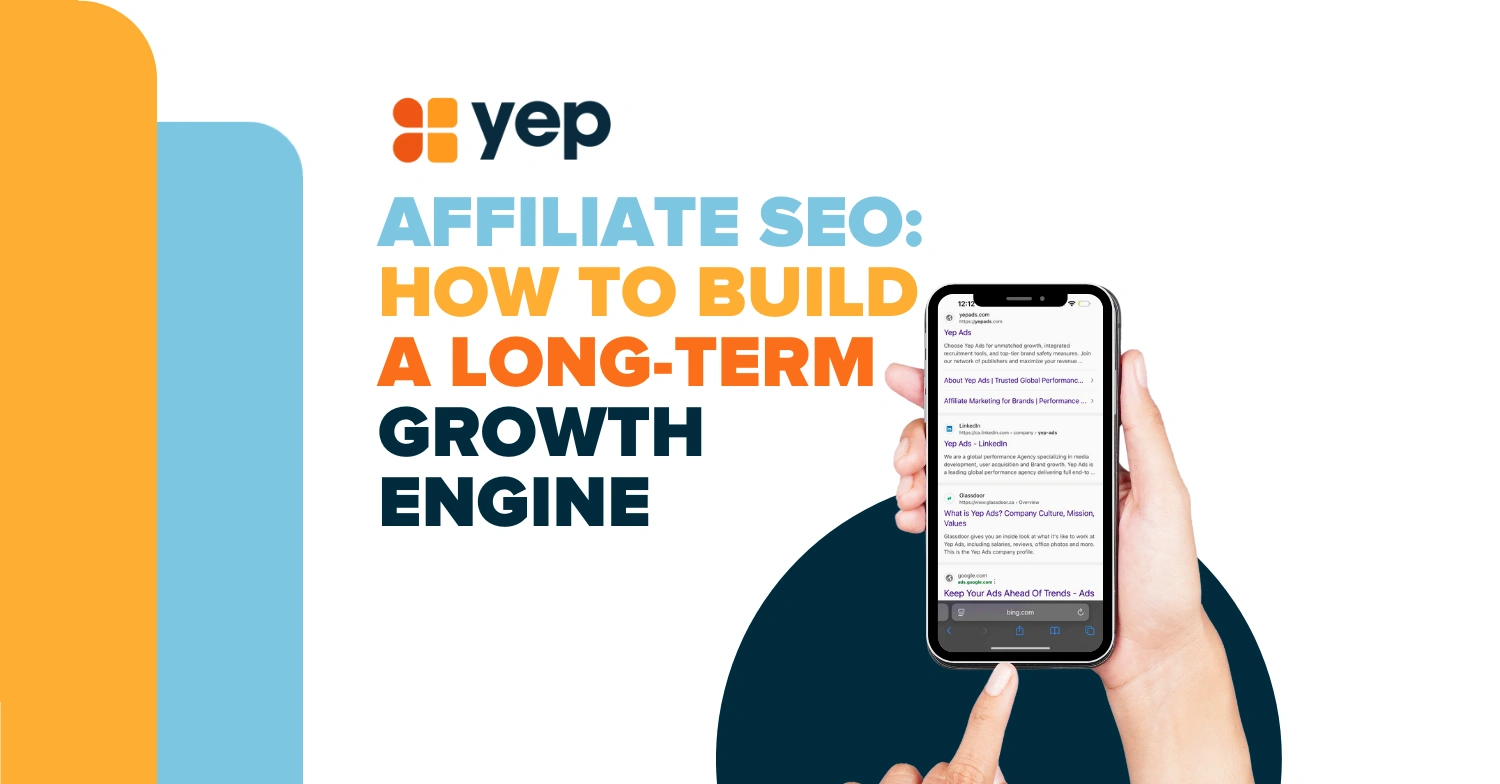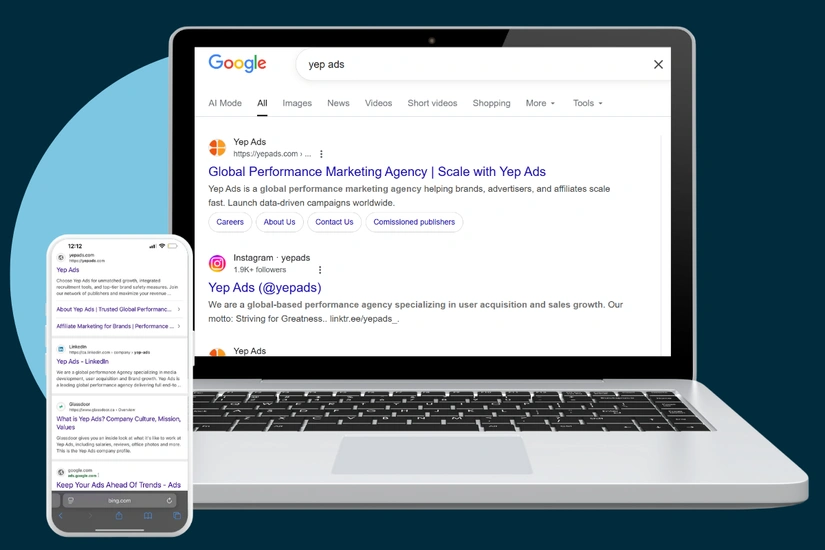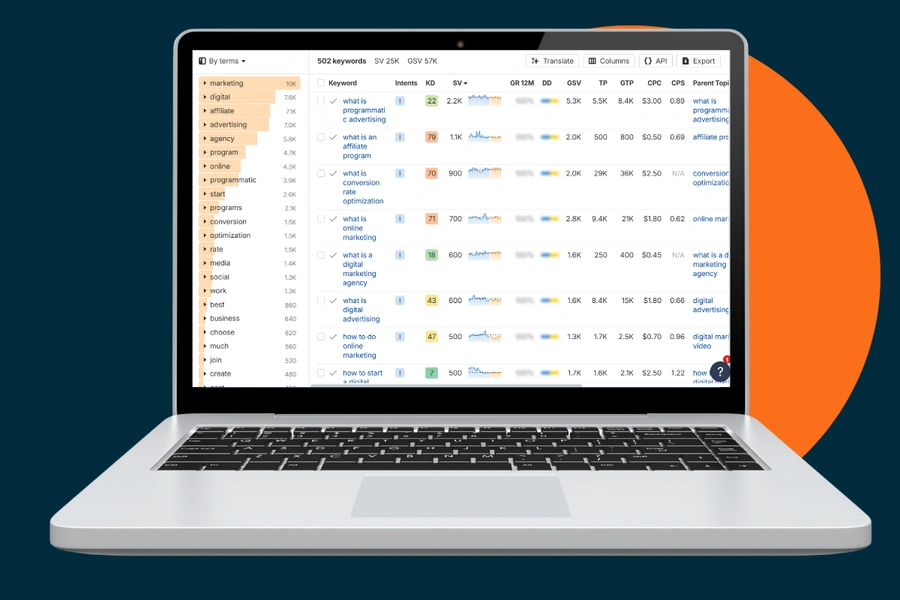
Affiliate SEO: How to Build a Long-Term Growth Engine
Want to build a traffic source that keeps growing even after the ads stop? That’s the power of affiliate SEO. It’s not a quick win, it takes a lot of time and effort, testing, and consistency. Once you get it right, it becomes a traffic engine that brings in clicks (and commissions) day after day so it’s definitely worth it.
SEO is one of the most powerful channels for sustainable growth,if you do it right but it’s also one of the hardest to master. Unlike paid ads, which switch off the moment your budget dries up, SEO builds long-term value. Each review, guide, or comparison page you publish can bring in traffic (and conversions) for months or even years. But that’s only true if you approach it with strategy and patience.
So let’s break down exactly what affiliate SEO means in 2026, how long it takes, and the step-by-step system you can use to build a sustainable revenue engine.
Основные выводы
- Affiliate SEO is a long-term channel that compounds over time.
- Matching search intent with the right content is the foundation of success.
- Success requires technical SEO, content strategy, link building, and CRO, not just publishing articles.
- Trust is essential: Google rewards authority, and audiences reward authenticity.
- The strongest affiliates combine SEO with paid channels to test fast and scale smart.
Оглавление
- What Is Affiliate SEO (and Why It’s Worth It)
- How Long Does Affiliate SEO Take?
- The Step-by-Step Affiliate SEO System
- Building Trust: Why SEO Alone Isn’t Enough
- Common Mistakes Affiliates Make
- SEO + Multi-Channel Strategy (The Smarter Play)
- Заключительные размышления
- Вопросы и ответы
What Is Affiliate SEO (and Why It’s Worth It)
Affiliate SEO is the art of attracting organic traffic from search engines and turning it into affiliate conversions. You publish helpful content that answers search queries, rank in Google, and monetize that traffic through affiliate links.
It’s very important to understand the business’s goals and analyze what’s working for competitors before we even get started to build the strategy.
Think about it like this:
- A paid ad campaign provides instant traffic, but it stops when the funding stops.
- Affiliate SEO is like building a digital asset. A single article can rank for dozens of keywords and continue to drive conversions for years.
Why it’s worth it in 2026:
- Search intent = purchase intent. Someone Googling “best VPN for students 2026” is primed to buy.
- Evergreen content keeps earning. A solid “best laptops under $1,000” post can bring in revenue year after year with small updates.
- Scalability. The more content you publish and optimize, the more authority your site builds, making each new page easier to rank.

And it works for every type of affiliate site:
- Comparison sites (like product or software comparison portals) thrive when they rank for “best” and “vs” keywords, guiding users who are ready to decide.
- Product review and listicle sites attract searchers looking for trustworthy recommendations before purchase.
- Coupon and deal sites benefit from ranking on time-sensitive, high-intent searches like “discount code” or “best deal today.”
- Niche blogs and content hubs build long-term authority by publishing educational, evergreen content that matches user intent.
Each of these models depends on visibility — and SEO is what turns that visibility into consistent, compounding income.
How Long Does Affiliate SEO Take?
Affiliate SEO is not a “publish today, rank tomorrow” channel. In competitive spaces like e-commerce, finance, or cybersecurity, it’s a slow build that rewards consistency. Think of it as planting seeds: the first few months feel like nothing’s happening, but the growth compounds over time.
Here’s a grounded timeline:
- 0–3 months: Laying the foundation. You’re publishing content, setting up site structure, and building your first links. Most pages will just get indexed, with little traffic to show yet.
- 3–6 months: Early traction. Long-tail keywords with lower competition (like “best holiday gift for gamers 2026”) may begin ranking and sending small but promising traffic.
- 6–12 months: Momentum builds. Your domain starts earning trust, rankings climb for mid-tier keywords, and revenue becomes more consistent.
- 12+ months: Scale. With steady optimization, refreshed content, and quality backlinks, your site transforms into a sustainable traffic and revenue engine.
The harsh truth? Many affiliates give up around month three, just as results start to show. The ones who stick with it for 12–18 months often see their sites evolve into reliable five- or even six-figure income streams.
The Step-by-Step Affiliate SEO System
First of all, you have to understand that there is no such thing as a step-by-step guide for SEO that will work for everyone. The strategy really depends on the goals, verticals, and content type you have in mind.
Step 1: Check What Is Already Working
Go through similar websites, use spy tools to analyze their traffic, think about what else you can “bring to the table”, what are some new ideas, new value you will be bringing online. SEO content just for content is not working anymore; search engines are looking for “people first” websites.

Step 2: Keyword Research & Intent
SEO starts with understanding what people search for and why.
Types of intent:
- Informational: “What is a VPN?”
- Commercial: “Best VPNs for remote work 2026”
- Transactional: “Buy VPN subscription deal”
If you’re using Ahrefs, you can actually filter keywords by search intent. This helps you focus your content strategy, for example, build blogs around informational queries, comparison pages for commercial intent, and landing pages for transactional searches.
By mapping intent correctly, you’re not just driving traffic, you’re attracting visitors who are more likely to convert.
Tips for affiliates:
- Don’t just chase high-volume keywords. Long-tail searches like “best Cyber Monday smartwatch under $200” convert faster and face less competition.
- Use tools (Ahrefs, SEMrush, Планировщик ключевых слов Google) to find gaps where intent is strong but competition is manageable.
- Group keywords into content clusters: one pillar guide (like “Best VPNs 2026”) supported by smaller posts (“VPN for Netflix,” “VPN for gaming”).
Step 3: On-Page SEO & Content Design
Ranking is only half the battle; you need to convert. Even if you have traffic, it doesn’t mean right away that you will get leads or conversions from it.
- Используйте clear headlines with your main keywords.
- Добавить comparison tables (pros/cons, pricing, features). These boost conversions dramatically.
- Используйте short intros + scannable sections. Readers want answers, not essays.
- Place affiliate links naturally. Forced CTAs kill trust.
Example: A “Best Wireless Earbuds 2026” post should include:
- Quick picks (best budget, best premium, best workout).
- Specs and comparison table.
- Personal recommendation at the end.
Step 4: Technical Setup & Site Performance
If your site is slow or messy, you won’t rank. One of the important ranking factors is site speed, sometimes we all want to make a very beautiful website with nice animation, but let’s not forget about the technical side of the optimization.
- Optimize for Core Web Vitals (speed, interactivity, layout stability).
- Ensure mobile-first design: most affiliate clicks happen on mobile.
- Build a clean site structure (use categories like /gadgets/, /reviews/, /guides/).
Step 5: Building Links & Authority
Google still values backlinks as one of the strongest ranking signals. While there is a lot of people out there offering help to build your backlinks, it’s important to understand that you want your website links to be placed on websites with a similar audience and overall the trusted sources.
How to build them:
- Guest posts on relevant blogs.
- Resource outreach (offer your guide as a reference).
- Skyscraper method: create a better version of a top-ranking guide and promote it to earn links.
- Partnerships with other affiliates and networks.
Tip: Links from high-authority, niche-relevant sites beat dozens of random low-quality backlinks.
Step 6: Conversion Rate Optimization (CRO)
Traffic without conversions is wasted effort.
- Test different CTAs: button vs text link, “Shop Now” vs “Get the Deal.”
- Добавить social proof (reviews, star ratings, testimonials).
- Optimize page layout: your affiliate links should be visible without being spammy.
Even small changes (button color, placement, copy) can lift conversions by 20–40%.
Step 7: Refresh, Scale, Repeat
SEO never ends. Google rewards fresh, accurate content. Try to post blogs or update content sometimes to show that your source stays trendy and current.
- Update old posts with new stats, screenshots, and products.
- Remove or redirect pages that don’t perform.
- Expand into new geos and verticals once you dominate one.
Building Trust: Why SEO Alone Isn’t Enough
In 2026, SEO is about E-E-A-T: Experience, Expertise, Authority, Trust.
To win, affiliates need to:
- Be transparent about affiliate partnerships.
- Write authentic reviews (use the products if you can).
- Add real author bios and about pages.
Google wants to rank trustworthy sites, and readers are the same.
Common Mistakes Affiliates Make
- Chasing volume instead of intent. 100 clicks from “best Black Friday laptop deal” will convert better than 10,000 from “laptops.”
- Ignoring site speed. A 2-second delay = 30% fewer conversions.
- Not tracking. Without analytics, you don’t know what’s actually working.
- Copycat content. If your article looks like every competitor’s, Google has no reason to rank it.
SEO + Multi-Channel Strategy (The Smarter Play)
The best affiliates don’t rely on SEO alone. They blend channels:
- SEO for evergreen organic growth.
- Paid traffic (Facebook, TikTok, Push) to test offers quickly.
- Электронная почта to re-engage users and drive repeat sales.
Yep Ads partners who combine SEO + paid channels often scale 2x faster, because they test with paid and then build long-term assets with SEO.

7. Final Thoughts
Affiliate SEO in 2026 is both challenging and rewarding. It’s not about “hacks” or “tricks.” It’s about consistency: publishing the right content, matching intent, building trust, and optimizing conversions.
Treat SEO like a long-term business investment, and you’ll create an income stream that compounds over time.
At Yep Ads, we’re here to help affiliates grow smarter — with exclusive offers, first-party traffic, and global scale. If you’re ready to take SEO seriously, let’s partner up.
Вопросы и ответы
- How long does it take to see results from affiliate SEO?
Typically 6–12 months before seeing traffic and first revenue, depending on your niche and effort. - Do I need to buy backlinks to rank?
No. While paid links exist, building natural, high-quality backlinks through guest posts, outreach, and partnerships is more sustainable. - Which niches work best for affiliate SEO in 2026?
Cybersecurity, e-commerce, finance, health & wellness, and subscription-based products are strong. - Can I succeed without writing content myself?
Yes, but you’ll need to invest in high-quality writers or AI-assisted content carefully edited for authenticity. - Should I rely only on SEO for affiliate marketing?
No. SEO is powerful long-term, but pairing it with paid and social traffic gives faster, safer growth.
